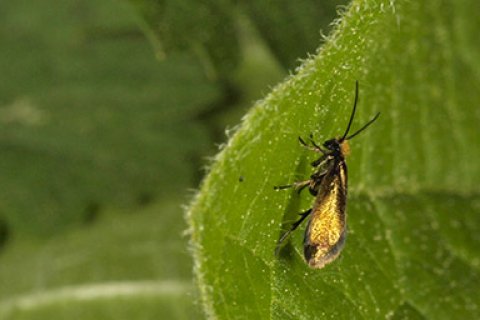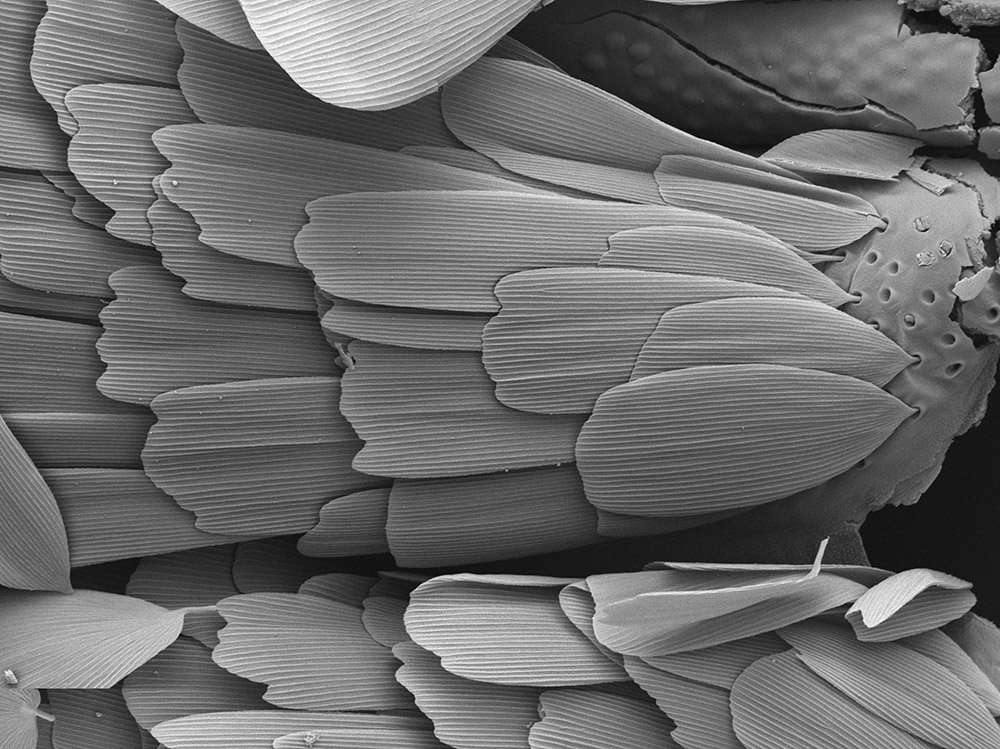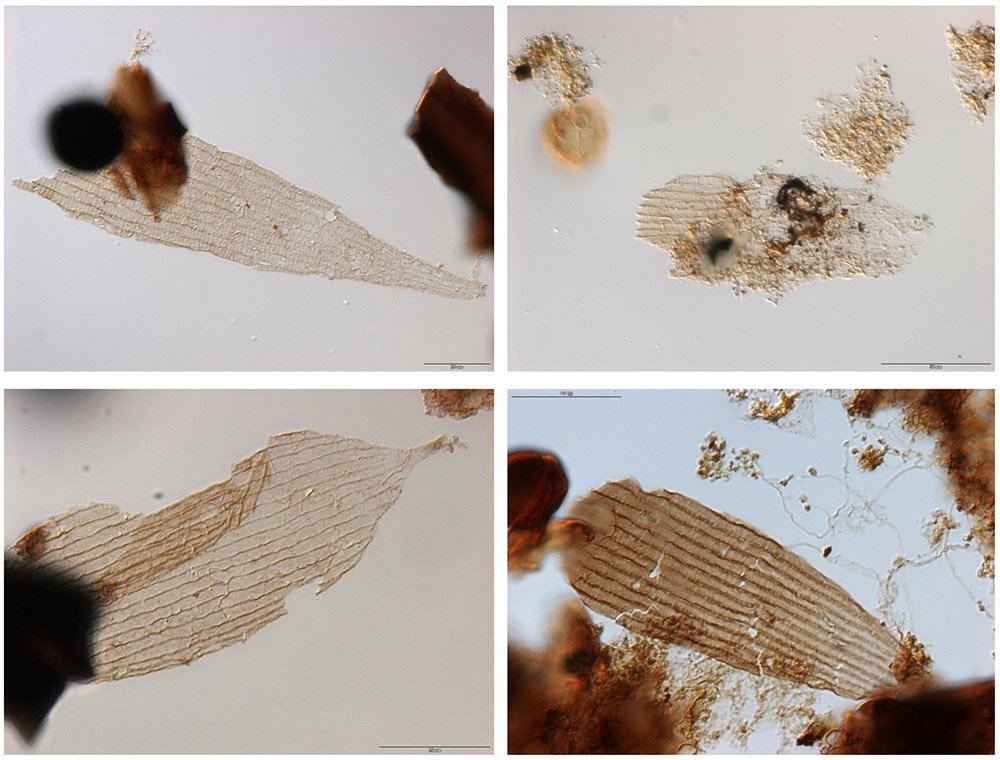World’s oldest moths also roamed Jurassic Park

An international team of scientists led by Timo van Eldijk and Bas van de Schootbrugge from Utrecht University have found the oldest fossil remains of moths and butterflies known to date. They published their results in Science Advances on 10 January 2018.
The fossil remains are more than 70 million years older than the oldest fossils of flowering plants and shed new light on the so-far presumed co-evolution between flowering plants and pollinating insects. The findings also suggest that the end-Triassic mass-extinction event 201 million years ago has not affected moths and butterflies (Lepidoptera). On the contrary, like dinosaurs, it is likely that the event triggered their expansion.
The fossil remains, wing and body scales from the Lepidoptera, were isolated from a core drilled in Northern Germany (Schandelah, Lower Saxony) of sediments straddling the mass-extinction event.

Setback in biodiversity
Utrecht University MSc student and lead author Timo van Eldijk explained: “The mass extinction event occurred at the end of the Triassic and was associated with massive volcanism as the super continent Pangea started to break apart. As a result, biodiversity on land and in the oceans suffered a setback with many key Triassic species going extinct, including many primitive reptiles. However, one major group of insects, the Lepidoptera moths and butterflies, appeared unaffected. Instead, this group diversified during a period of ecological turnover.”
Sucking mouthparts
Utrecht University palaeontologist Dr Bas van de Schootbrugge continued: “The fossil remains contain distinctive hollow scales, and provide clear evidence for a group of moths with sucking mouthparts, which is related to the vast majority of living moths and butterflies.”
Modern day butterflies are well known for their association with flowering plants and the butterfly ‘tongue’ has long been assumed to be an important adaptation for feeding on flowering plants.
The new evidence indicates that the first Lepidopterans were associated with non-flowering seed plants (gymnosperms), the ecologically dominant plant group during the Jurassic. The earliest proboscid moths (Glossata) likely used their sucking mouthparts to feed on the sugary pollination droplets secreted by several groups of gymnosperms.

Insight in climate change challenges
Timo Van Eldijk concluded: “This evidence has transformed our understanding of the evolutionary history of moths and butterflies as well as their resilience to extinction. By studying how insects and their evolution was affected by dramatic greenhouse warming at the start of the Jurassic, we hope to provide insight into how insects might respond to the human-induced climate change challenges we face today.”
The study was published online in the journal Science Advances on Wednesday 10 January 2018 and was funded by Utrecht University as well as the German Science Foundation (Heisenberg Fellowship). The scientists were based at Utrecht University (The Netherlands), Boston College (United States), and the Hessisches Landesmuseum Darmstadt and Staatliches Museum für Naturkunde Stuttgart (Germany).
Publication
Timo van Eldijk, Torsten Wappler, Paul Strother, Carolien van der Weijst, Hossein Rajaei, Henk Visscher, Bas van de Schootbrugge (2018). A Triassic-Jurassic window into the evolution of Lepidoptera. Science Advances 4, e1701568.

